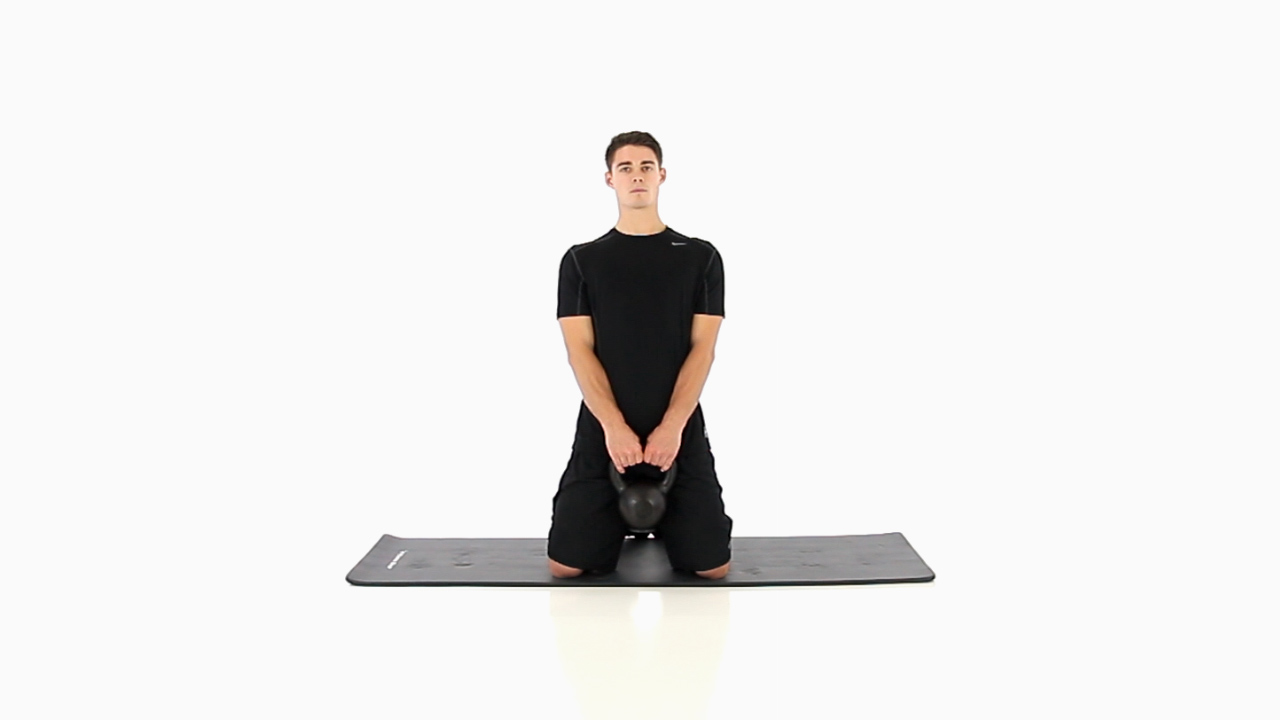This is a starting point in executing a prone to supine lower body rolling pattern when technique is compromised in a full roll. The pad aids to assist the rolling pattern by developing a downhill roll, minimizes the range of motion and helps to disassociate the lower body.
Tall Kneeling Turns Anterior Load
This self-limiting exercise helps to expose a lack of motor control and bilateral asymmetries in the Tall Kneeling position.
- Starting Position:
- Tall Kneeling
Being in the Tall kneeling posture by placing both knees on the ground just wider than your hips, your lower legs remain parallel, and your ankles are plantar flexed. Your pelvis remains in a neutral stacked position with a tall spine, and your shoulder and hips remain squared off.
Begin by holding a kettlebell or sandbag in both hands in front of you. Be sure to maintain the balanced upright posture and perform a series of turns:
1) Head Turns
Turn the head to the right and left in a smooth, controlled manner maintaining the “perfect posture” and take a deep diaphragmatic breath and return to a neutral position. Begin with small turns and slowly add range but do not push into discomfort or increase the range, so you have to compensate in any way.
2) Head and Shoulder Turns with stationary KB
Turn the head and shoulders to the right and left in a smooth and controlled manner maintaining the “perfect posture” and leaving the KB in front of the body. Begin with small turns and slowly add range but do not push into discomfort or increase the range, so you have to compensate in any way. Pause at the end ranges to cycle a full breath.
3) Head and Shoulder Turns with moving KB
Turn the head and shoulders to the right and left in a smooth and controlled manner while moving the KB in that direction. (if you can turn far enough you may move the KB to the outside of the hip you are turning over). The aim is to perform this turns while maintaining "perfect posture" Begin with small turns and slowly add range but do not push into discomfort or increase the range, so you have to compensate in any way.
Pause at the end ranges to cycle a full breath.



Related Exercises
-
-
This dynamic exercise helps develop shoulder and torso stability under an anti-rotational load.
-
-
This is a lower body rolling pattern used to increase the dynamic stability and core communication connecting the upper and lower body in a natural rotational pattern.
